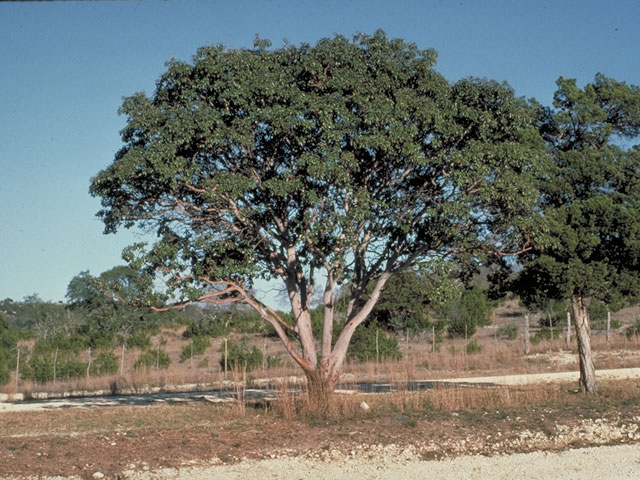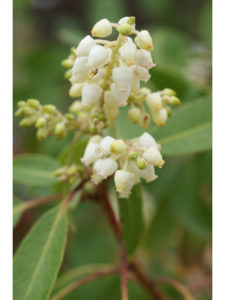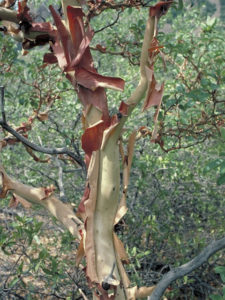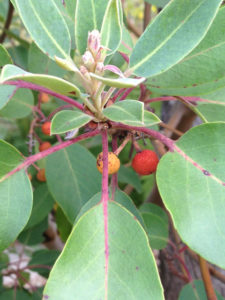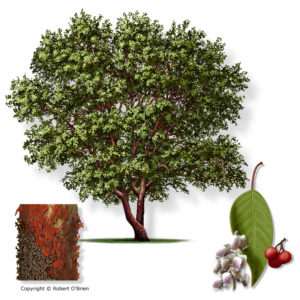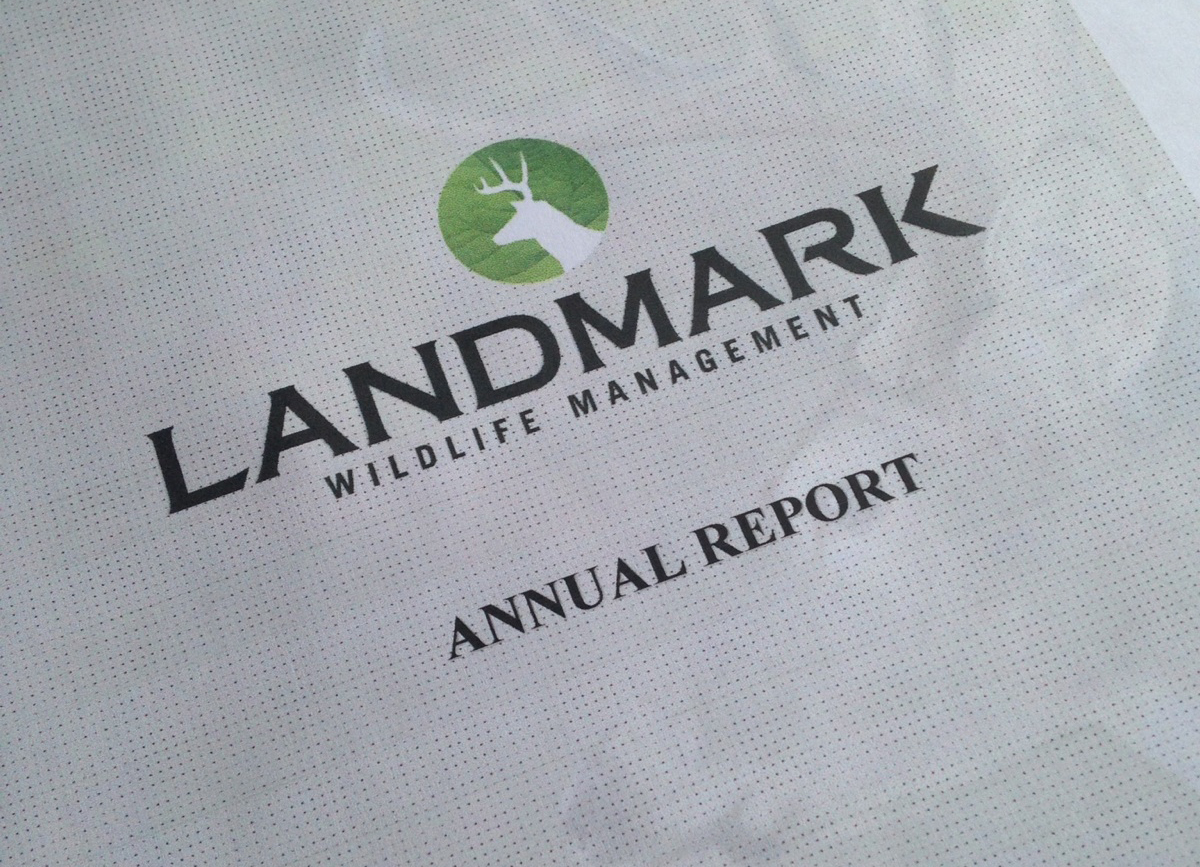A Gift to Texas Property Owners
Imagine introducing a piece of Texas’s natural heritage to your landscape—the stunning Texas Madrone, a true gem among our state’s flora. This native wonder, known scientifically as Arbutus xalapensis, offers not just visual delight but also a wealth of ecological benefits, making it an excellent choice for any landowner in the Lone Star State.
Standing modestly at about 15-20 feet, the Texas Madrone captivates with its twisted branches and a broad, rounded canopy. Its most striking feature is the smooth, reddish-brown bark that peels away in thin sheets to reveal a bright, cinnamon-colored trunk beneath. Throughout the year, its glossy, evergreen leaves shimmer in the sunlight, and come spring, the tree bursts into clusters of creamy white flowers. These blossoms give way to small, orange-red berries, much loved by the local bird population.
Despite its beauty, the Texas Madrone is not commonly found and typically grows in isolated clusters, particularly thriving in the rocky, limestone-rich soils of West Texas, the Trans-Pecos region, the Edwards Plateau, and the Hill Country. Its preference for higher elevations and drier climates makes it a distinctive addition to the local landscape, adding to its special status and raising conservation awareness.
Embrace the Beauty of the Texas Madrone: A Native Marvel
Beyond its beautiful bark, the tree blossoms in spring with clusters of creamy white flowers, transforming into a haven for local wildlife when it bears small, vibrant orange-red berries. These fruits are cherished by pollinators, various bird species, and small mammals, bringing a buzz of life to its surroundings.
Adapted to Thrive
In the wild terrains of West Texas, the Edwards Plateau, and the Hill Country, the Texas Madrone is perfectly at home. Its ability to flourish in the rocky, limestone-rich soils of these regions speaks to its resilience and adaptability.
Moreover, the Texas Madrone’s thick bark makes it an invaluable ally in fire-prone areas, offering significant protection against wildfires. This feature, along with its impressive drought resistance once established, allows it to maintain its splendor with minimal water, reducing the strain on local water resources.
A Low-Maintenance Addition to Any Landscape
For Texas landowners, the Texas Madrone is more than just a tree; it’s a statement of beauty and resilience. Once established, it demands very little care, thriving on the scant rainfall and tolerating the local pests and diseases with ease. Its robust root system not only anchors it firmly but also helps in stabilizing the soil, preventing erosion and preserving the landscape’s integrity.
Quick Plant Facts:
- Texas Madrone Scientific Name: Arbutus xalapensis
- Common Name: Texas Madrone
- Height: Up to 30 feet, more typically 10-20 feet
- Bark: Smooth, peeling, reddish-brown
- Flowers: Creamy white in spring
- Fruit: Small, orange-red berries
- Leaf: Glossy, evergreen
- Preferred Soil: Well-drained, rocky, slightly alkaline
- Sunlight: Full sun to partial shade
- Water: Drought-resistant once established
- Wildlife: Attracts pollinators, birds and small mammals
- Fire Resistance: High due to thick bark
As you plan your landscape, consider the Texas Madrone not just for its beauty but for its role in enhancing and protecting the local ecosystem. Opting for this tree allows you to preserve a piece of Texas’s ecological heritage while enjoying the manifold benefits it brings to your property.




